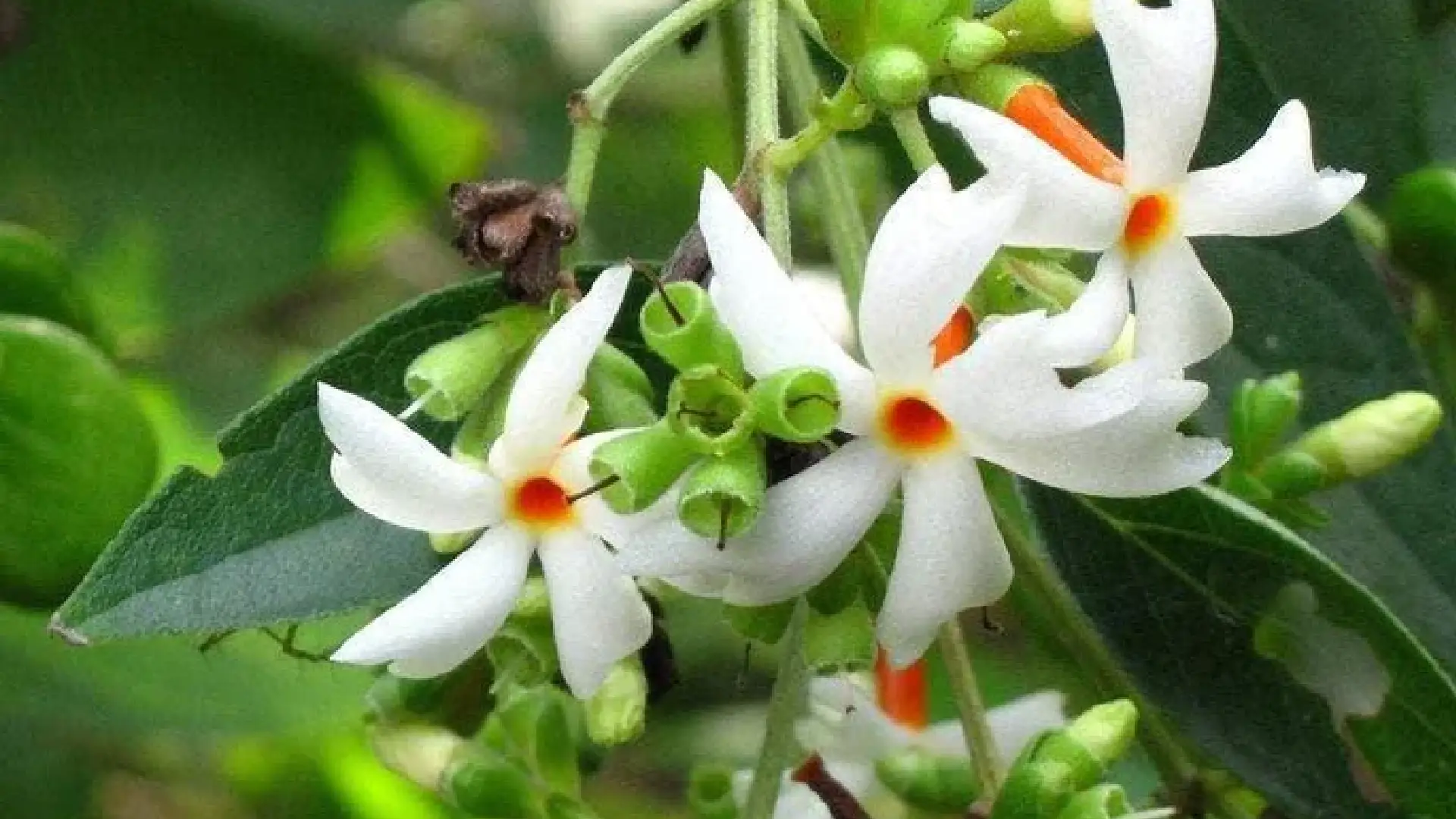The Parijat Tree’s Mythical Origins: From the Ocean of Samudra Manthan to Your Garden
Have you ever heard of a tree so enchanting it seems like a creature from the realm of fantasy?
Meet the Parijat tree – a botanical wonder that’s as elusive as a unicorn and as essential as your morning coffee.
The Enchanting Parijat Tree: A Botanical Marvel Steeped in Mythology and History
Picture this: a tree so bewitching that you’d question whether it’s real or a mere product of your imagination. That’s the Parijat, also known as the Night-Flowering Jasmine.
But this tree is more than just a pretty face; it’s steeped in mythology, history, and an undeniable sense of wonder.
A Gift from the Gods: The Mythical Origins of the Parijat Tree
In the grand epic of Samudra Manthan during the Satyuga, the Parijat emerged as one of the cosmic jewels from the ocean. It’s believed to be a Kalpa Vriksh or wish-granting tree, a treasure of unparalleled value.
According to legend, Lord Krishna himself gifted the Parijat to his beloved wife, Satyabhama, making it a symbol of love and devotion.
The Allure of the Parijat Tree: A Garden of Celestial Beauty
Today, growing a Parijat in your garden isn’t merely an act of horticulture; it’s an invitation to witness the extraordinary. Its celestial beauty will leave you breathless and awestruck, just as it did for countless others over the ages.
Prime Minister Modi’s Symbolic Act: Planting the Parijat in Ayodhya
Now, fast forward to a historic moment in Ayodhya – the stone-laying ceremony for the Ram Mandir construction at the Ram Janmabhoomi site. In the midst of this monumental event, Prime Minister Narendra Modi did something both symbolic and profound: he planted a Parijat sapling.
Why? Because in the presence of the Parijat tree, the boundaries of the possible expand into the realm of the impossible.
The Parijat Tree: A Symbol of Unity and Blessings
The Parijat tree isn’t confined to a single religion or culture; its significance spans South Asia’s diverse tapestry. According to the Harivansh Puran, it’s a Kalpavriksha, a wish-bearing tree, found nowhere else on Earth but in heaven.
This tree isn’t just a botanical wonder; it’s a source of blessings. Newlyweds seek its divine grace, and every Tuesday, a fair is held where locals pay homage to this celestial gift.
Placing a Parijat tree in your garden is believed to bring peace and prosperity to your home, according to age-old traditions.
The Parijat Tree’s Power: Beyond Symbolism and Healing Properties
In the realm of Vastu, planting this tree in the right direction can fill your house with happiness and good fortune. Even in Sikhism’s Sukhmani Sahib, the Parijat tree finds a mention as a symbol of divine names.
But the magic doesn’t stop at its symbolism. Despite its bitter-tasting flowers, the Parijat tree boasts medicinal properties that can cure various ailments, from fever and sciatica to arthritis and constipation. It’s even used to treat snakebites, and in the world of Ayurveda, Parijat leaves are hailed for their miraculous benefits.
Conclusion: Embrace the Enchantment of the Parijat Tree
So, dear readers, let the delicate blooms and rich mythology of the Parijat tree transport you to a world beyond our own, where magic and wonder reign supreme. Plant one in your garden, and who knows what blessings, wonders, and surprises it might bring to your life. The Parijat isn’t just a tree; it’s a gateway to a world of enchantment.
